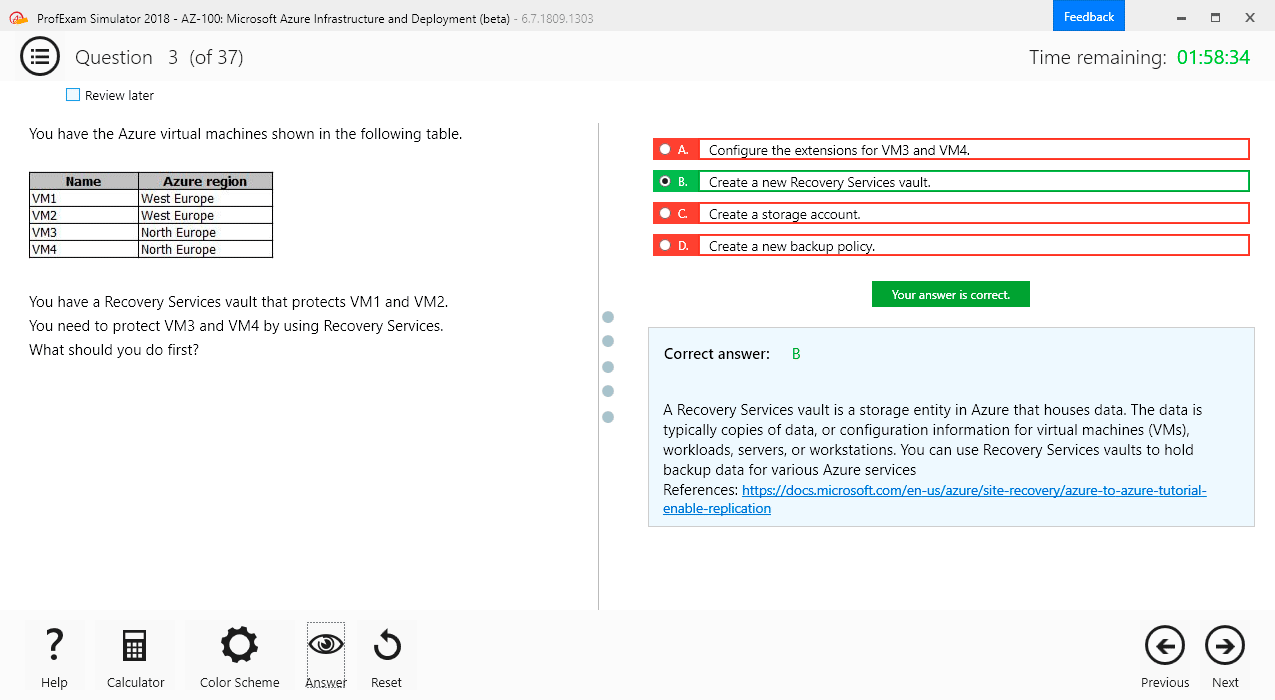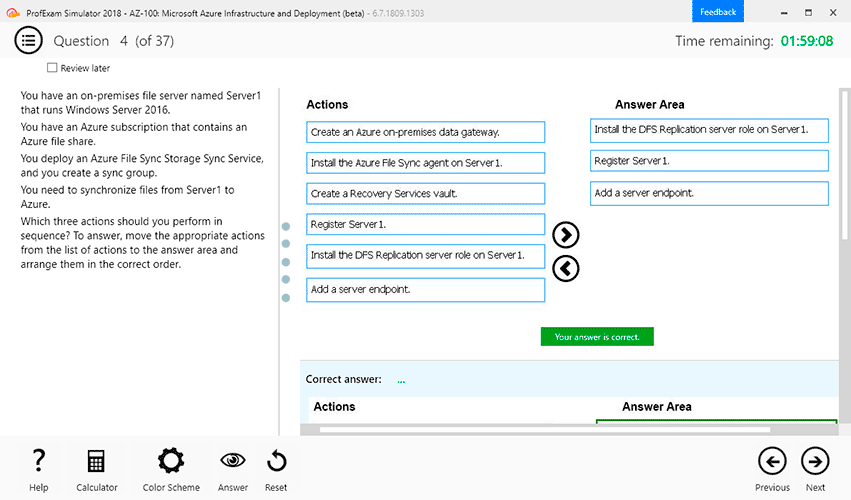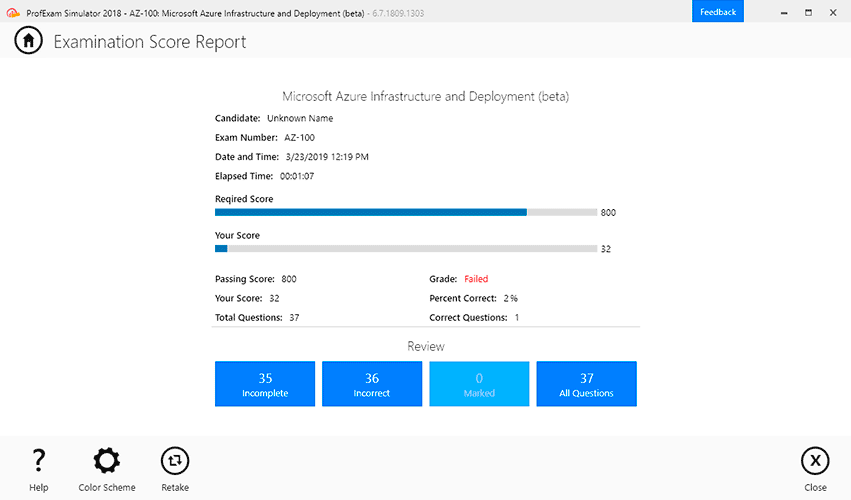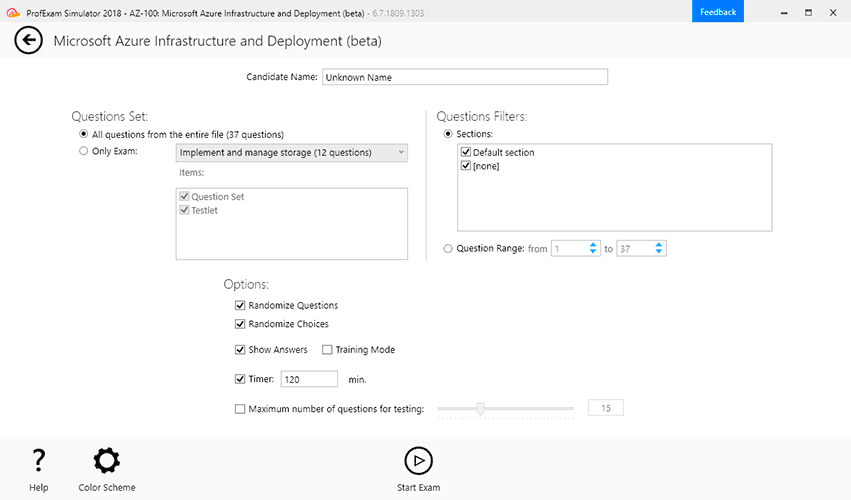File Info
| Exam | IBM Storage Technical V1 |
| Number | C9020-668 |
| File Name | IBM.C9020-668.TestKing.2018-09-28.68q.tqb |
| Size | 299 KB |
| Posted | Sep 28, 2018 |
| Download | IBM.C9020-668.TestKing.2018-09-28.68q.tqb |
How to open VCEX & EXAM Files?
Files with VCEX & EXAM extensions can be opened by ProfExam Simulator.
Coupon: MASTEREXAM
With discount: 20%





Demo Questions
Question 1
A customer needs to exchange encrypted data cartridges with another company. A competitor offers a solution that encrypts the data with static keys loaded the
tape drives. IBM proposes IBM TS1150 tape drives using the built-in encryption feature.
Which competitive advantage does the IBM TS1150 solution provide?
- It achieves better throughput by encrypting and compressing data at the same time.
- It stores keys in the drive that can then be exported to partners in a secure format.
- It compresses the data before encrypting to achieve a better compression ratio.
- it writes a unique encrypted data key on the cartridge using public/private key pairs.
Correct answer: D
Explanation:
How the encryption key server processes encryption keys In system-managed and library-managed tape encryption, unencrypted data (clear text) is sent to the tape drive (TS1150 Tape Drive, TS1140 Tape Drive, TS1130 Tape Drive or TS1120 Tape Drive), and converted to ciphertext using a symmetric 256-bit AES Data Key (DK) generated by the encryption key server. The ciphertext is then written to tape. The encryption key server uses a single, unique Data Key for each Enterprise Tape Cartridge. This Data Key is also encrypted, or wrapped, by the encryption key server using the public key from an asymmetric Key Encrypting Key (KEK) pair. This process creates an Externally Encrypted Data Key (EEDK). The EEDK is written to the cartridge memory and to three additional places on the tape media in the cartridge. The tape cartridge now holds both the encrypted data and the means to decrypt it for anyone holding the private part of the KEK pair. The DK may also be wrapped a second time using the public key of another party to create an additional EEDK. Both EEDKs can be stored on the tape cartridge. In this way, the tape cartridge can be shipped to a business partner holding the corresponding private key. That private key would allow the DK to be unwrapped and the tape decrypted by the business partner. References: https://www.ibm.com/support/knowledgecenter/en/STFS69_3.3.0/ts7740_encryption_keys.html How the encryption key server processes encryption keys In system-managed and library-managed tape encryption, unencrypted data (clear text) is sent to the tape drive (TS1150 Tape Drive, TS1140 Tape Drive, TS1130 Tape Drive or TS1120 Tape Drive), and converted to ciphertext using a symmetric 256-bit AES Data Key (DK) generated by the encryption key server. The ciphertext is then written to tape. The encryption key server uses a single, unique Data Key for each Enterprise Tape Cartridge. This Data Key is also encrypted, or wrapped, by the encryption key server using the public key from an asymmetric Key Encrypting Key (KEK) pair. This process creates an Externally Encrypted Data Key (EEDK). The EEDK is written to the cartridge memory and to three additional places on the tape media in the cartridge. The tape cartridge now holds both the encrypted data and the means to decrypt it for anyone holding the private part of the KEK pair.
The DK may also be wrapped a second time using the public key of another party to create an additional EEDK. Both EEDKs can be stored on the tape cartridge. In this way, the tape cartridge can be shipped to a business partner holding the corresponding private key. That private key would allow the DK to be unwrapped and the tape decrypted by the business partner.
References: https://www.ibm.com/support/knowledgecenter/en/STFS69_3.3.0/ts7740_encryption_keys.html
Question 2
A customer wants to improve storage efficiency within a data center. The customer requires a low latency storage system that has a highly parallel architecture and comprehensive data reduction with pattern removal.
Which system should the technical specialist propose?
- IBM DS8886 HPFE
- IBM FlashSystem A9000R
- IBM FlashSystem V9000
- IBM XIV with compression
Correct answer: C
Explanation:
IBM FlashSystem A9000 is a highly parallel, all-flash storage solution for cloud-scale businesses:Harness the performance of highly parallel architecture and IBM FlashCore technology in one innovative system Optimize storage economics with pattern removal, deduplication, and compression Incorrect Answers:B: IBM FlashSystem(R) A9000R is a grid-scale, all-flash storage platform.References: https://www-01.ibm.com/common/ssi/rep_ca/7/872/ENUSAG16-0087/ENUSAG16-0087.PDF IBM FlashSystem A9000 is a highly parallel, all-flash storage solution for cloud-scale businesses:
- Harness the performance of highly parallel architecture and IBM FlashCore technology in one innovative system
- Optimize storage economics with pattern removal, deduplication, and compression
Incorrect Answers:
B: IBM FlashSystem(R) A9000R is a grid-scale, all-flash storage platform.
References: https://www-01.ibm.com/common/ssi/rep_ca/7/872/ENUSAG16-0087/ENUSAG16-0087.PDF
Question 3
Which solution provides virtualization, consolidation, and automation for a cloud deployment?
- IBM XIV with IBM Spectrum Protect
- IBM FlashSystem 900
- IBM Virtual Storage Center
- IBM Spectrum Accelerate
Correct answer: C
Explanation:
IBM Virtual Storage Center is a storage virtualization platform and a storage management solution for cloud-based and software-defined storage. Virtual Storage Center enables organizations to monitor, automate and analyze storage. Incorrect Answers:B: IBM FlashSystem 900 all-flash storage arrays accelerate applications in mission-critical environments.D: Use IBM Spectrum Accelerate to build a flexible, cost-effective cloud environment: deploy on any x86 server.References: http://www-03.ibm.com/software/products/en/ibm-virtual-storage-center IBM Virtual Storage Center is a storage virtualization platform and a storage management solution for cloud-based and software-defined storage. Virtual Storage Center enables organizations to monitor, automate and analyze storage.
Incorrect Answers:
B: IBM FlashSystem 900 all-flash storage arrays accelerate applications in mission-critical environments.
D: Use IBM Spectrum Accelerate to build a flexible, cost-effective cloud environment: deploy on any x86 server.
References: http://www-03.ibm.com/software/products/en/ibm-virtual-storage-center

